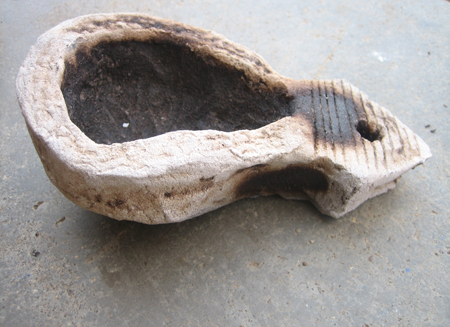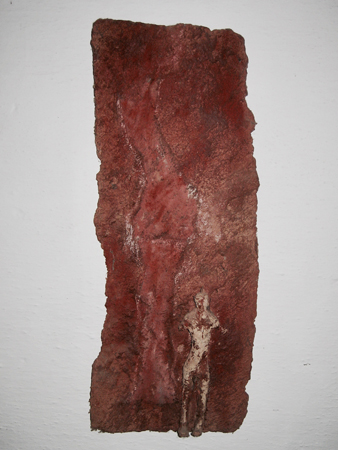Field Notes on Raku & Cork
Catherine Henke
Randee Silv
December 2017
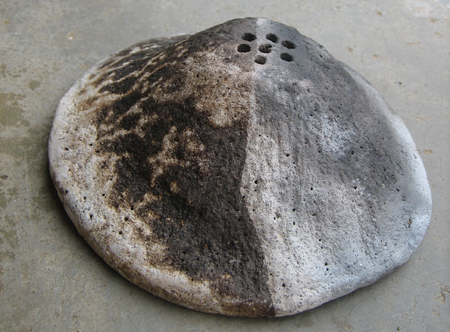
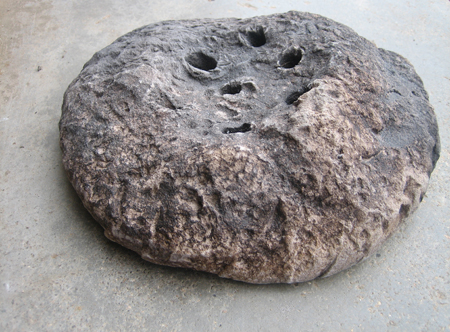
Obvara is a 12th century Siberian technique involving scalding the finish on the pottery to seal the porous surface. Pieces are made with a clay (white for obtaining more effects) that has quite a lot of sand in it to resist thermal shocks. After the first firing, these bisque pieces are heated to approximately 1650 degrees F. They’re then removed and dunked into the obvara mixture and then into water to rapidly cool them. The pieces range from off white to almost black with speckles.
Spots sometimes appear, looking like eye patterns believed to protect food from evil spirits. This technique has also been called “Baltic raku” or “sourdough pottery.” It might’ve originated when a hot pot accidentally fell into a bucket of fermented kitchen scraps.
Mixture:
10 liters of warm water
1kg of wheat flour
12gr of baker’s yeast
22gr of white sugar
Ferment for 3 days in a warm place (more time if it is cool)
Stir at various timesOther recipes I read about suggest that you could combine pickle, sauerkraut or beet juice with rye or wheat flour. Milk could be substituted for the water. Crushed hemp seeds left over from squeezing out the oil can be mixed in. Powdered coal or chimney ashes could also be added.
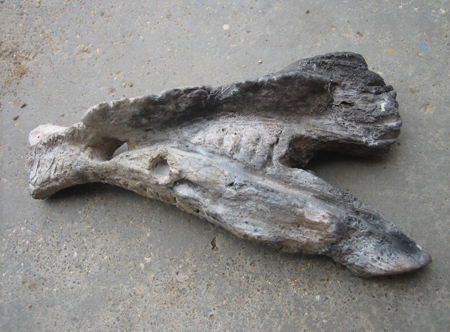
10/25/16: Apart from their petrified and primitive aspect and the strong presence of the action of the fire, I noticed that their shapes could be seen as objects for ritual. Something that is independent of my will which belongs to another time, to the Stone Age, to fossils or objects with a special unknown function. Most of the pieces are small, but looking at the pictures of them I can imagine them really big. They have the structure and strength of a large object.
10/27: I collected cow dung, straw, pottery shards, different size wood pieces as combustibles for the firing of the clay. As I was walking and looking at the ground, I just had this feeling that raku obvara has many familiarities with the elements I’d found, dried plants, stones with all kinds of textures, little pieces of wood, bones, cork…etc. In the making of my last pieces, it was as if I had already gotten this feeling without having it presently conscious. I started to shape little pieces of bones, wood, horns that I had found which had attracted my attention. And there is always a shape coming back in various versions that is inspired by a very popular container used in the Alentejo, (cocho), made from the nodes of cork oak trees for drinking water. With everybody drinking from the same container, it’s said that bacteria does not grow on cork.
10/29: I’ve been collecting straw before it starts to rain again. On Monday I’ll go to the telheiro (brick factory) to have my pieces fired. I hope this week they will be dry. I would like to make the raku obvara next weekend, if it’s not raining.
11/1: There is something that fascinates me in this technique. It’s the difficulty in controlling the effects. A great part of the result occurs from chance and you have to adapt to whatever happens, since you don’t have a very definite idea of what it will be. It’s a game of chance. The distance between the intention and the realization is also altered by the action of the fire and smoke. In the beginning there is a desire, at the end we are just the witnesses to it, if the shape and texture have been in a fair dialogue. The piece is finished when it’s removed from the water. No alteration is possible, differently than when I’m making a painting, and the process of finishing it is much slower and imperceptible.
Obvara is a type of raku, because like in raku you remove the glowing hot pieces from the fire, but instead of glazing them, you dip them immediately into the obvara mixture. It is more economic and much less toxic. But you don’t have colors. The results are completely different.
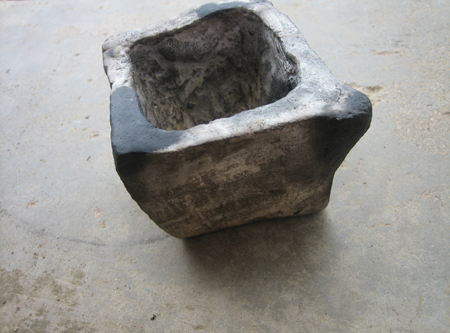
“Though I sweep and sweep
Everywhere my garden path,
Through invisible
On the slim pine needles still
Specks of dirt may be found.”
Sen-No-Rikyu
Raku (pleasure, ease) was the official title and seal given to the Chōjirō family for a style of ceramics that was initially referred to as Ima-yaki (“now” wares) in Kyoto during the 16th century. There were no written instructions. Technical secrets learned through observation have been passed down for generations from father to son with each expected to cultivate an individual artistic sensibility.
Sen-No-Rikyu, tea master to military ruler Toyotomi Hideyoshi, advanced further a form of tea ceremony that reflected the principles of Zen Buddhism and would inspire contemplative awareness in an unpretentious oasis. Rikyu commissioned Tanaka Chōjirō, already recognized for his palace tile work, to create a chawan (tea bowl) with a rough simplicity that embodied the aesthetics of wabi sabi – a notion of beauty that is “imperfect, impermanent and incomplete.” With Japan’s “Way of Tea” very much in vogue, local contemporary wares that could rival the ornate and expensive imports from China were in demand.
“If you have one pot
And can make your tea in it
That will do quite well.
How much does he lack himself
Who must have a lot of things?”
Sen-No-Rikyu
Chōjirō’s hand shaped bowls, fired in a kiln where charcoal was kept burning hot and fast with the pumping of bellows, were left instead to cool in the open air. In Kuro-raku, a glaze of crushed black river stones was applied a dozen times to bisque pieces that were then rapidly pulled from the kiln at a precise moment to blacken them. The bitter green tea, known for keeping Zen monks awake during meditation, had travelled to Japan from China and was said to look best in a black vessel. Rikyu supposedly chose black, knowing that Hideyoshi disliked it, as a statement against his planned invasion of Korea for territorial and political gain. The ruler preferred the red clay fired with a transparent glaze of Chōjirō’s Aku-raku.
“When you hear the splash
Of the water drops that fall
Into the stone bowl
You will feel that all the dust
Of your mind is washed away.”
Sen-No-Rikyu
“In the spirit of raku, there is the necessity to embrace the element of surprise. There can be no fear of losing what was once planned and there must be an urge to grow along with the discovery of the unknown. In the spirit of raku: make no demands, expect nothing, follow no absolute plan, be secure in change, learn to accept another solution and, finally, prefer to gamble on your own intuition. Raku offers us deep understanding of those qualities in pottery which are of a more spiritual nature, of pots by those willing to create objects that have meaning as well as function.” – Paul Soldner
Western raku, popularized by Hal Riegger and Paul Soldner in the 60s, added a post-firing reduction step to the process. Glowing hot pieces are placed in metal containers filled with combustible materials (straw, sawdust, newspaper, wood chips, pine needles) and covered with a lid for about 20 minutes to starve the fire of oxygen. The resulting burn and smoke yield unpredictable surface effects. Techniques of reduction similar to this had also been practiced in the Lower Congo and by the Ashanti centuries ago, though glazes were most likely not used.
“Raku cannot be done by rules. There is always a ‘sixth sense’ that prevails.” – Hal Riegger
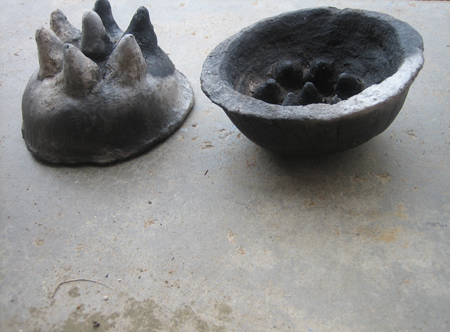
“If it is possible, work outdoors where fences, walls, pavement, and the earth will stimulate the imagination and give wonderful patterns and form to clay… The more unexpected or different from what is anticipated they can be, the more imaginative will be their solutions. Solutions and offbeat challenges are best arrived at spontaneously.” – Hal Riegger
“How often do we look only at the outside of a clay piece and not notice what happens inside?” – Hal Riegger
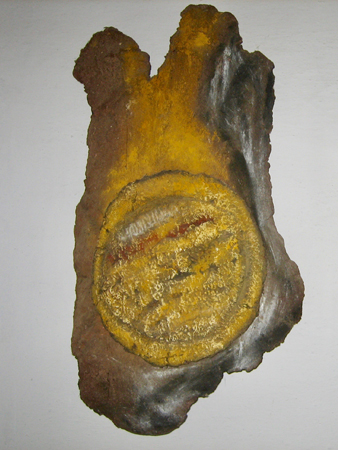
Slow walks through the surrounding Montado. The cork oaks were directing the dream. They were making the connection between the depth of the earth and the sky, beyond the place where the silence of the forest lies, touching infinity. The pieces are realized with recycled paper mixed with pigments and dry material originated from nature with the intention to give memory to shape. Paper is extracted from trees and these pieces are molded around the bark of trees.
The Montado, an ecosystem specific to Alentejo, is an agro-silvo-pastoral system whose dominant species is the cork oak. It is one example of a European sustainable use of soil. The economic value of the Montado is related to the production of cork but also to farming, honey production, hunting and mushroom picking. The Montado is an important cultural reference regarding biodiversity preservation, historical social systems, traditional agriculture and landscape preservation.
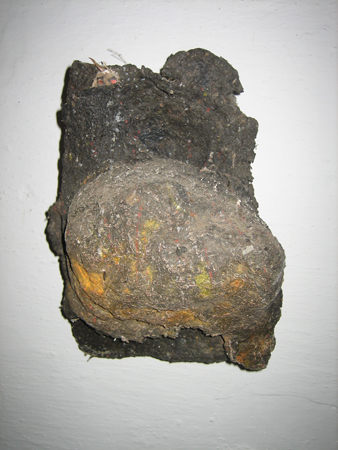
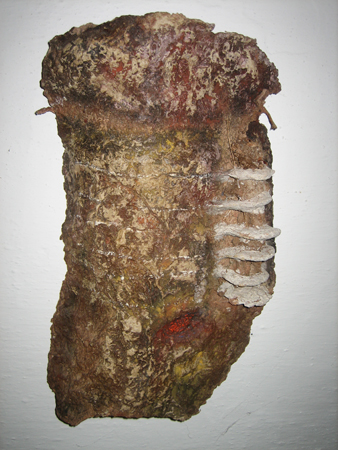
These images of shaped clay, pressed paper forms, their roughness, the cracks & crevices, the minute details all seem to be speaking to each other. Maybe they’re triggers. Perhaps there’s a deeper link that unravels archives of memory, recordings of accounts, a thread continuing through the primitive, the ancient. I started thinking about the haunting stillness, the variegated surfaces of the Alentejan montado, the region’s distant past, the placement & lure of its megalithic structures, of its standing stones. Horizontal. Vertical. Uneven. Squared. Circular. Tapered. Secrets rooted in earthen mounds, meanings unknown. The regeneration of bark on cork oak trees. Rituals. Human touch. Remnants of nature changing. Some left covered. Some exposed. The weathering of time.
Text: Catherine Henke in italics
and Randee Silv without
Clay & Paper: Catherine Henke

